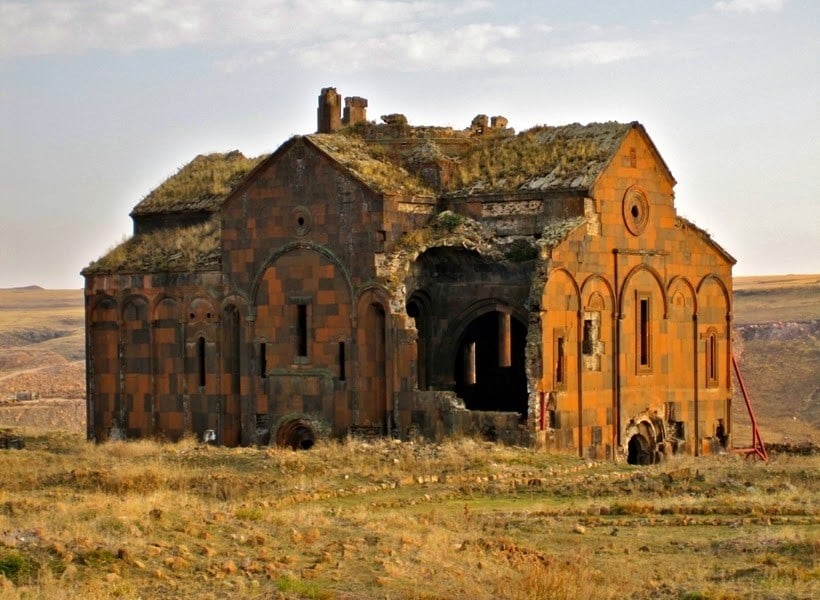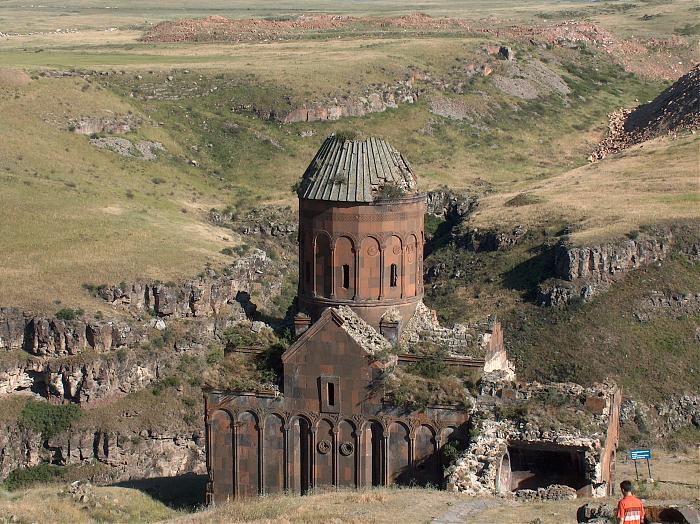
The capital of medieval Armenia, the city of Ani was a thriving center of trade and faith, survived by its haunting ruins, the National Geographic writes.
“East of the Turkish city of Kars lies a complex of lonely medieval churches. Octagonal towers, crumbling walls, and fallen columns lay scattered across vast grasslands. In the gorge that drops away to the Akhuryan River—which forms Turkey’s border with the modern state of Armenia—is an ancient bridge, broken in the middle,” author Antonio Ratti writes.
These ruins are all that remain of Ani, the cosmopolitan capital of medieval Armenia, one of the earliest kingdoms to adopt Christianity as its state religion in the early A.D. 300s. The site of a fifth-century fortification, Ani was chosen to be Armenia’s capital in the 10th century. It became home to as many as 100,000 people, and was so richly endowed with sacred buildings that it came to be known as the “city of 1,001 churches.”

“Its strategic position along trade routes between the Black Sea and the Caspian Sea made it an attractive possession, condemning it to centuries of invasion—and eventually, a long period of abandonment,” the article reads.
The author notes, that the medieval kingdom of Armenia once extended far beyond the modern boundaries of today’s nation.
Christianity became a central part of Armenian history when it was still a young faith. The religion took hold and Christian Armenia existed alongside the Byzantines, the Sassanians, and then the Arab-Muslims, Antonio Ratti writes.
“The serene ruins of the city, once swarmed by armies through the ages, has always been a special place for Armenians. In the wake of the Armenian Genocide, it stands as an even more powerful reminder of Armenia’s losses and of its astonishing endurance,” the article notes.








